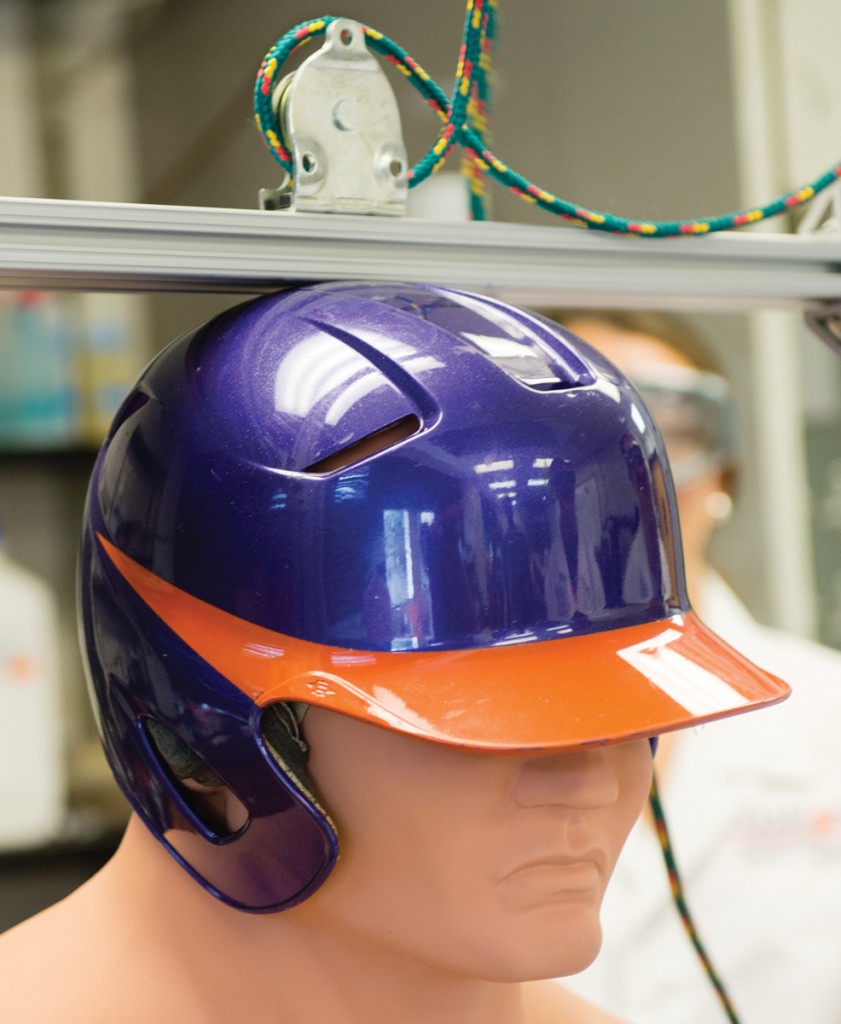Heads up
by Brian Mullen and Lindsey Johnston
Taking on concussions in sports
Concussions in big-time sports have been making the news, but the athletes most at risk are probably not on TV. They are children.
“Some parents are in denial about the severity of their child’s injury because they want them to become the next stand-out athlete,” says Jimmy Sanderson, assistant professor in the Department of Communication Studies. “And in many cases coaches are not equipped with training to identify concussions. At times, the desire to win can trump concern for the child’s well-being, and therefore allow youth athletes to continue playing despite potential injuries.”
Sanderson, who is conducting research on the media’s portrayal of concussions and fans’ perceptions about player safety, notes that communication is key to athlete safety.
But communication barriers are rampant at every level of sports. If coaches and parents shame injured players into playing with pain, long-term damage can result, he says.
Sanderson serves as the director of the sports communication major, planned for launch in the spring, in which students will examine such a variety of issues including concussion awareness and prevention, parent behavior in youth sports, and social media’s influence on sports. Students will also work directly with faculty members in bioengineering who are conducting concussion-related research.
David Kwartowitz, John DesJardins, and Delphine Dean, assistant professors in the Department of Bioengineering, are mentoring an undergraduate Creative Inquiry research team that will investigate the scientific implications of concussions. The students designed a dummy simulation that is equipped with brain sensors that provides concussion data.
“We designed this dummy for the education of elementary, middle, and high school students on the severity of concussions, as well as the benefits of wearing protective equipment,” Kwartowitz says. “We control impact and collect concussion data while the dummy is donning an NCAA approved football or baseball helmet.”
The students built a tracking system to strike the head of the dummy with numerous objects, including weights, footballs, baseballs, and helmets. Using the tracking system, the researchers can manipulate the impact of these objects on the head of the dummy and the sensors provide instant concussion results.
“We’ve begun a competition for the students to design their own padding inside the shell of a football helmet to avoid probable concussions at high impact,” Kwartowitz says. “Ultimately, the data collected will offer insight as how to better protect an athlete from concussion.”
The researchers plan to make their findings available to athletes, coaches, and parents. The dummy simulation will eventually be on display in Greenville, South Carolina at the Roper Mountain Science Center’s newly renovated health research facility, which has 120,000 students visiting annually.
Brian Mullen is director of research communications. Lindsey Johnston is a senior majoring in communication studies and English at Clemson.




